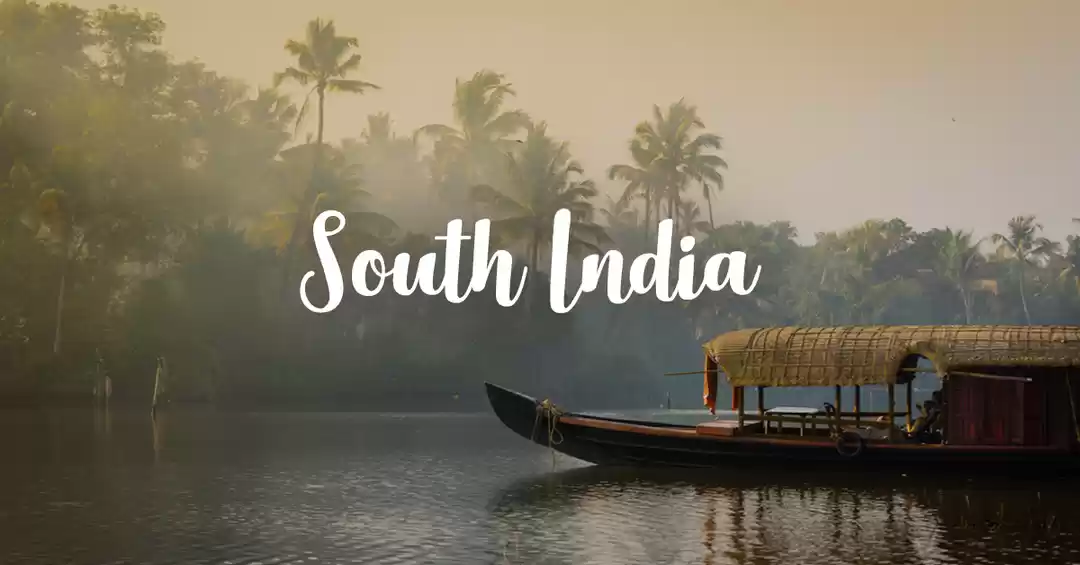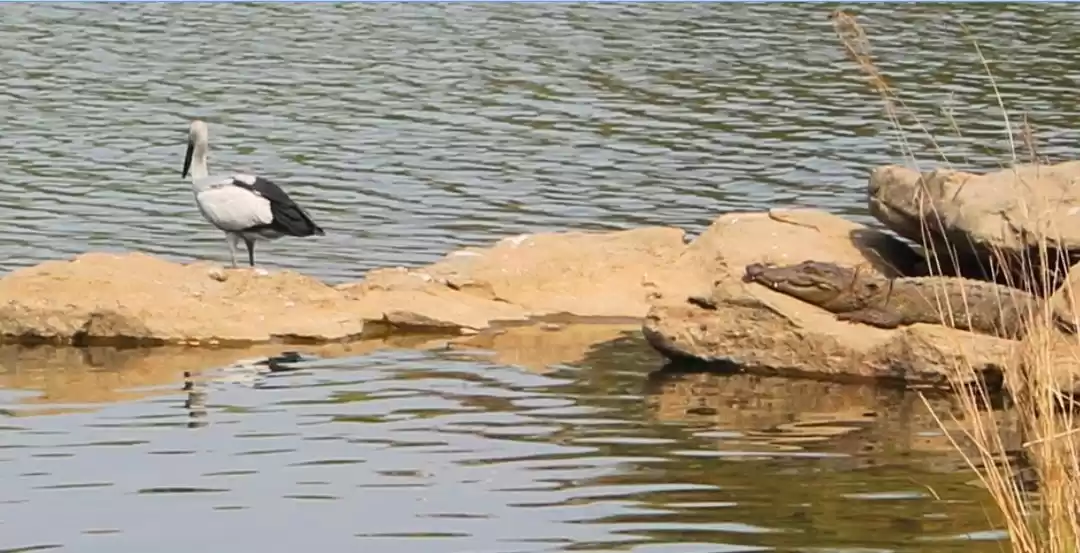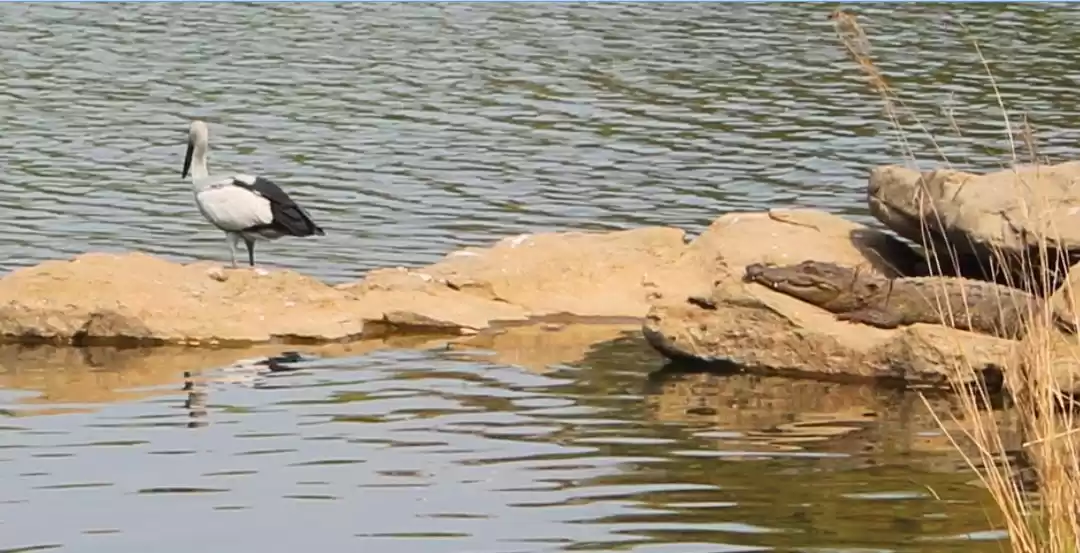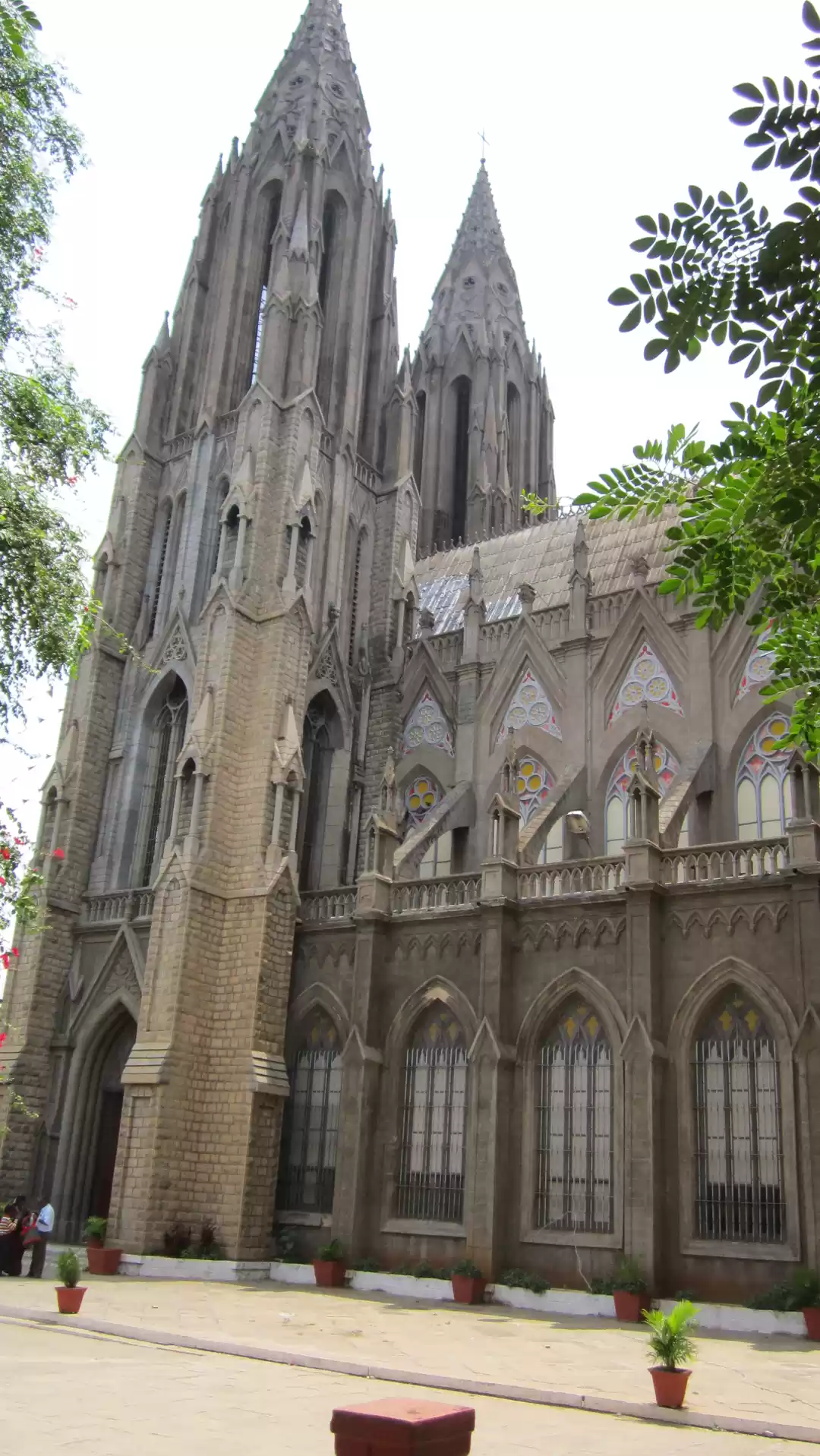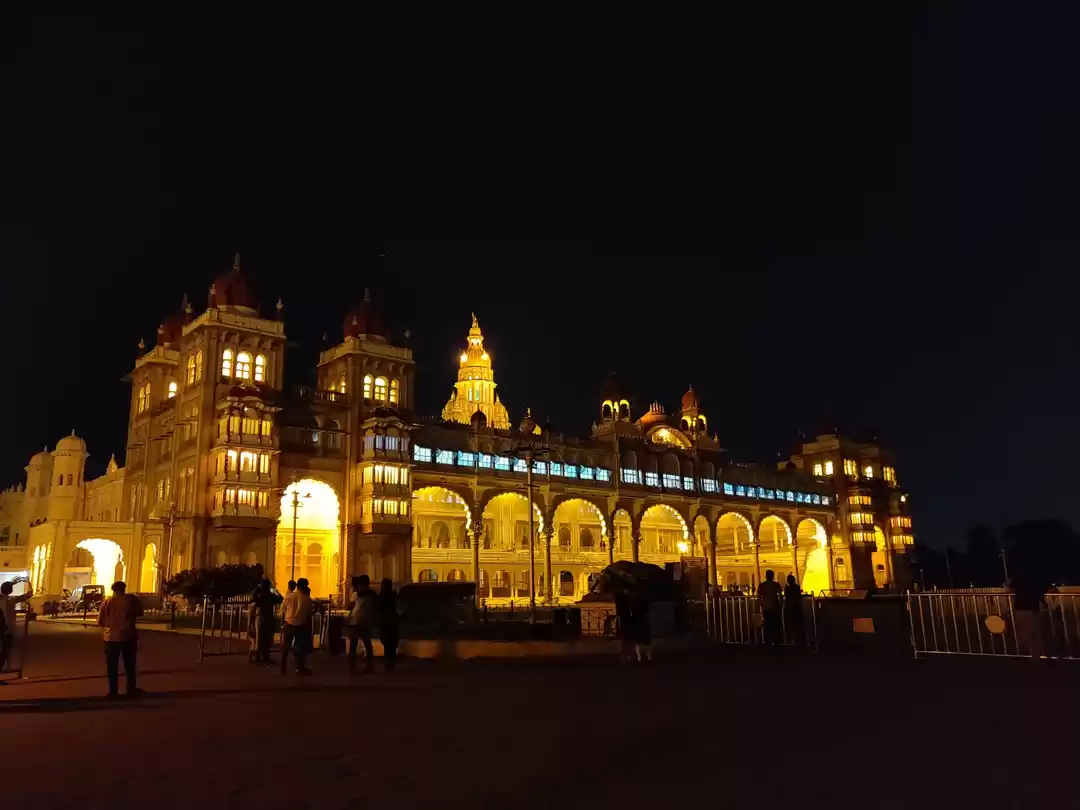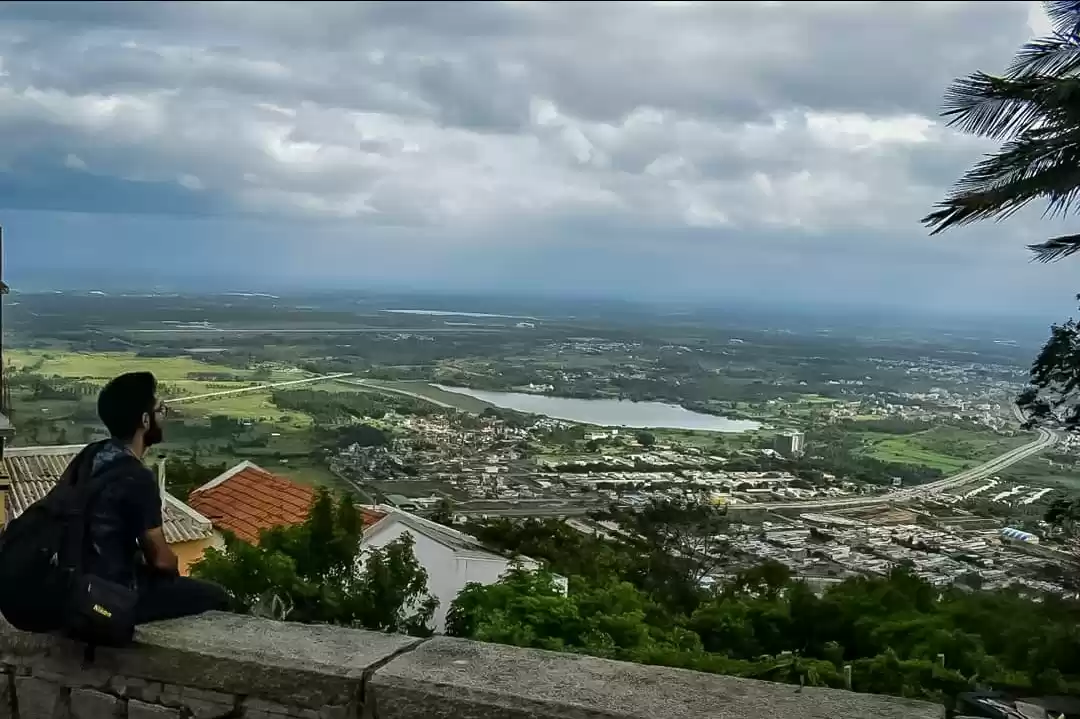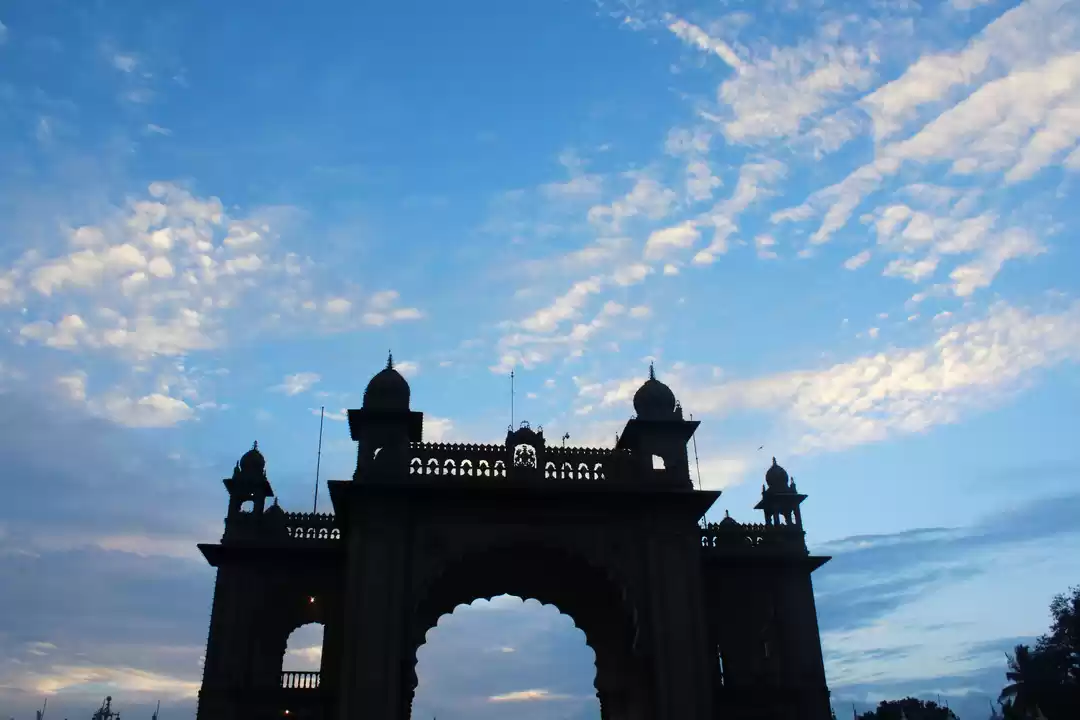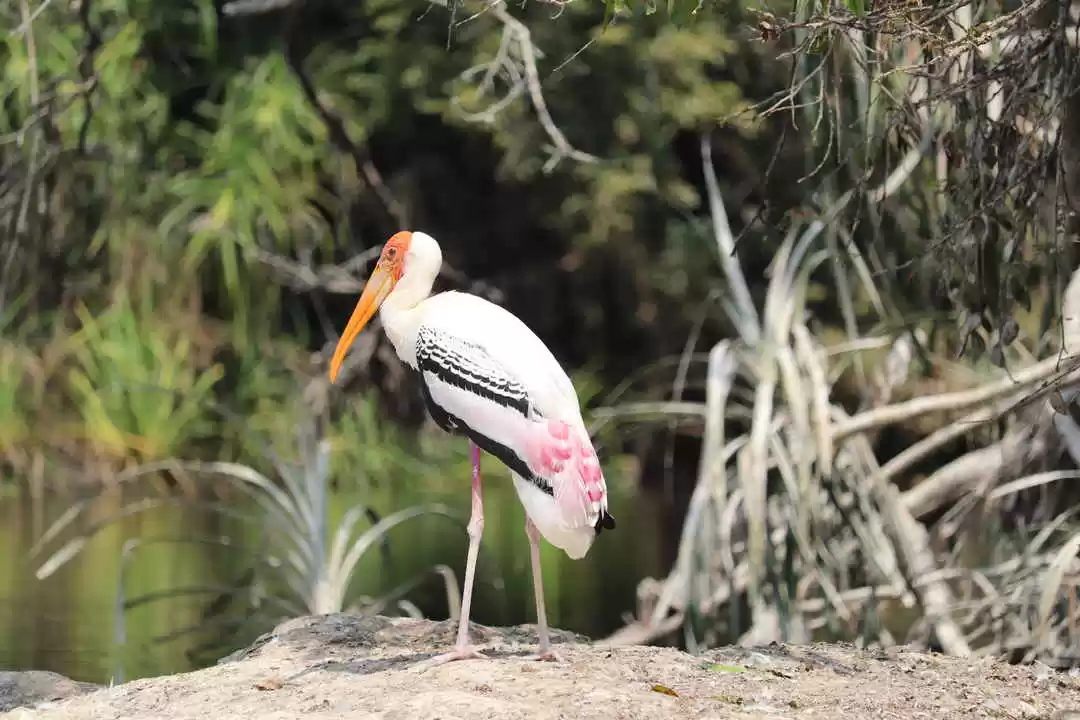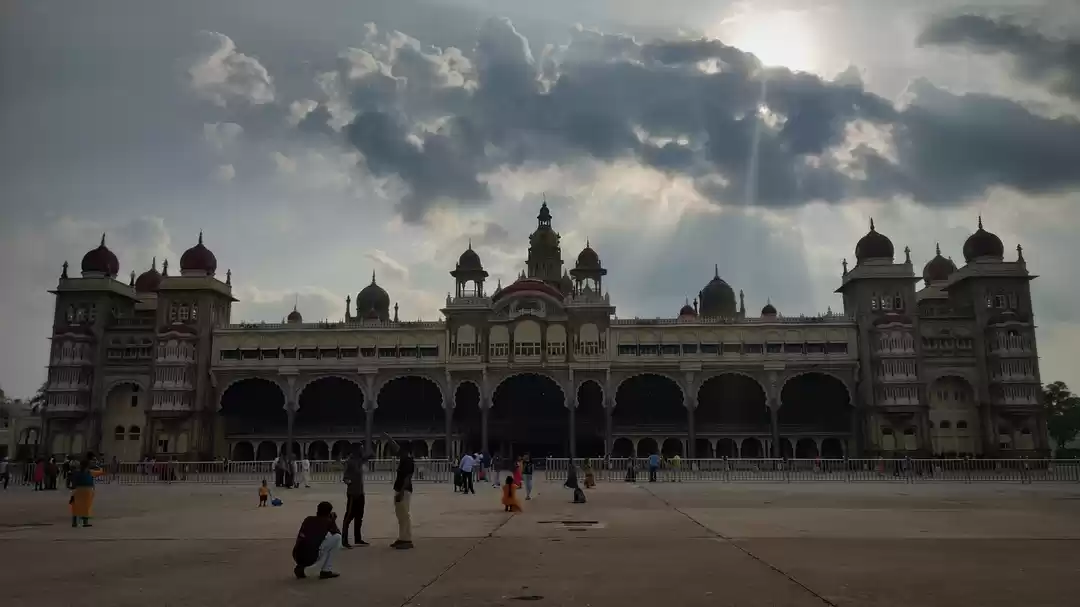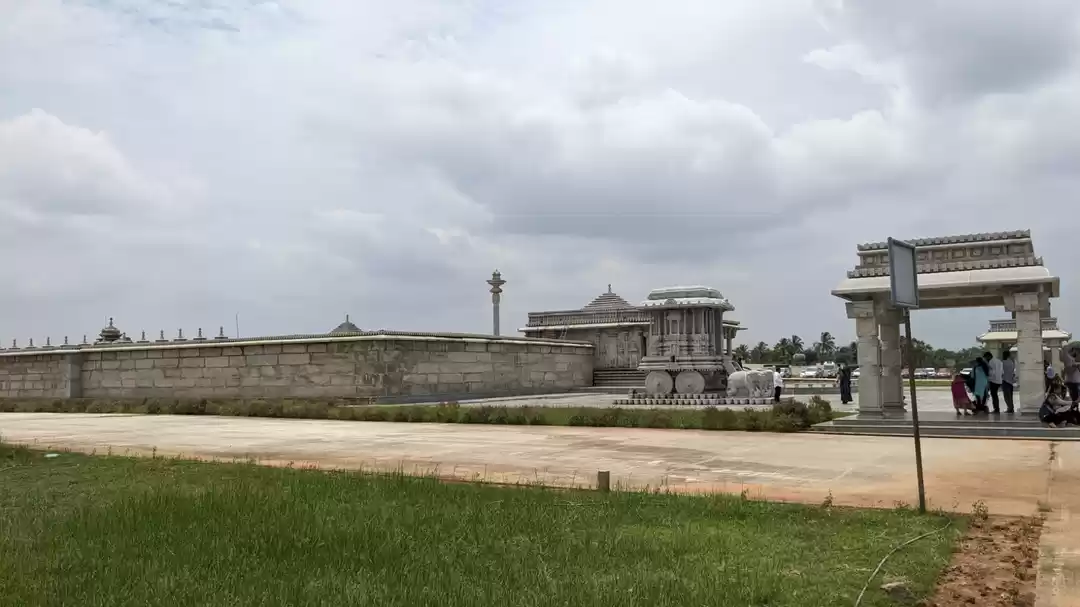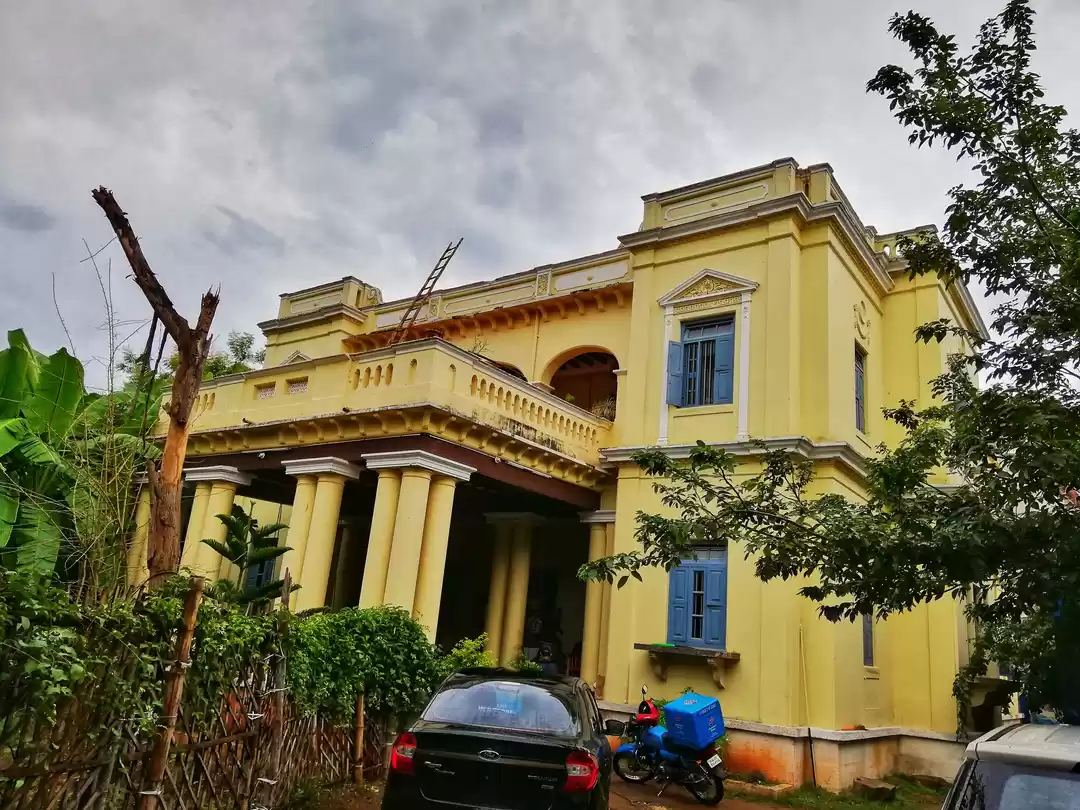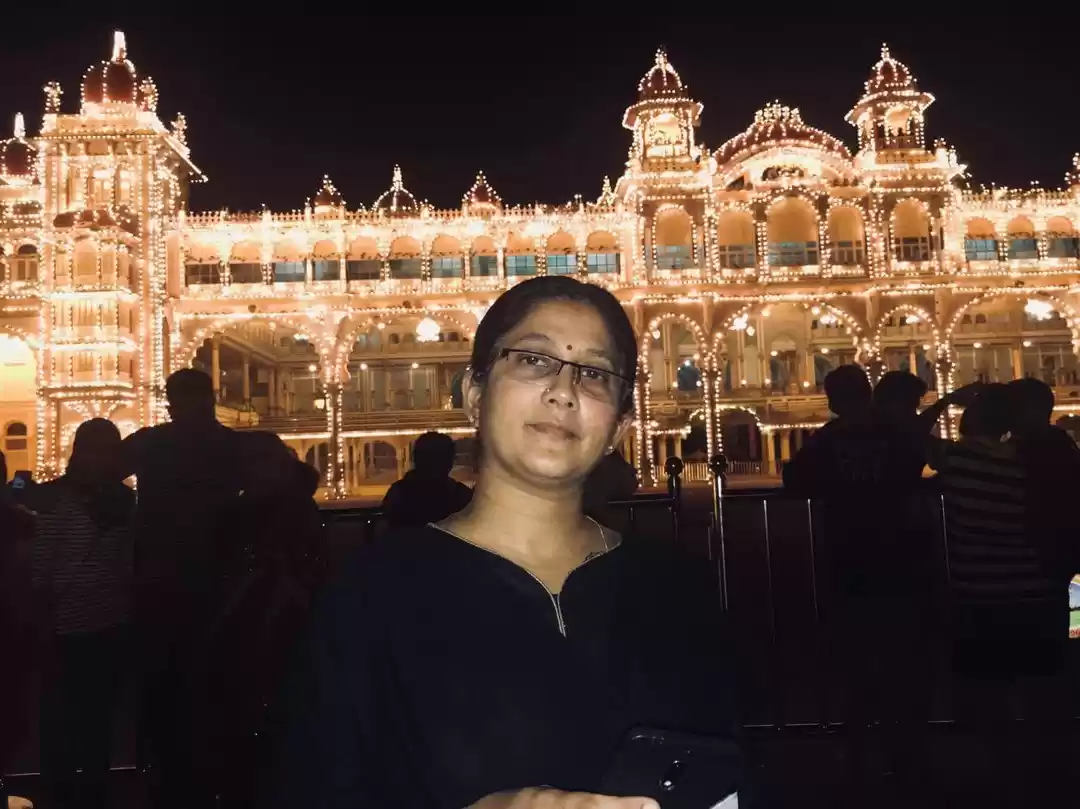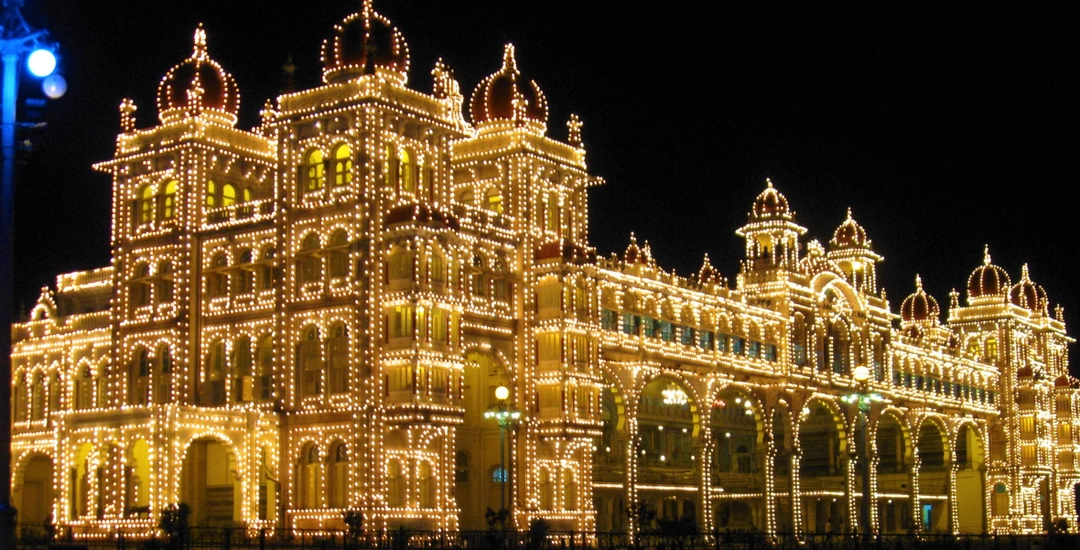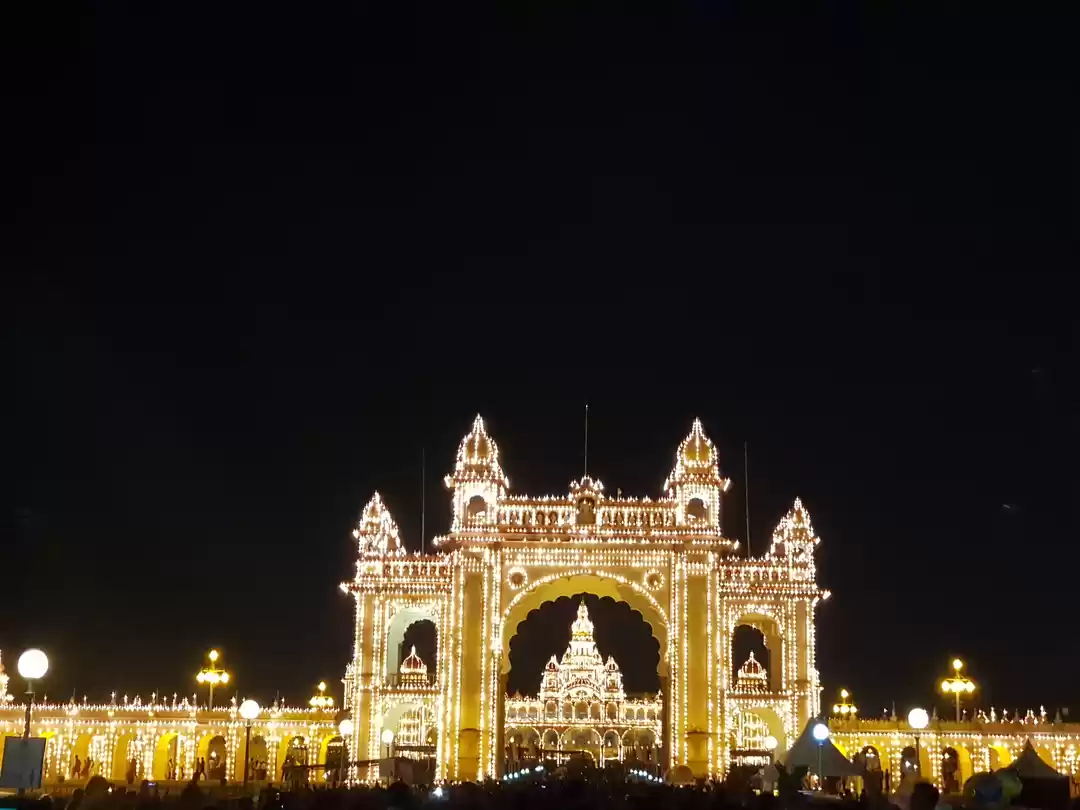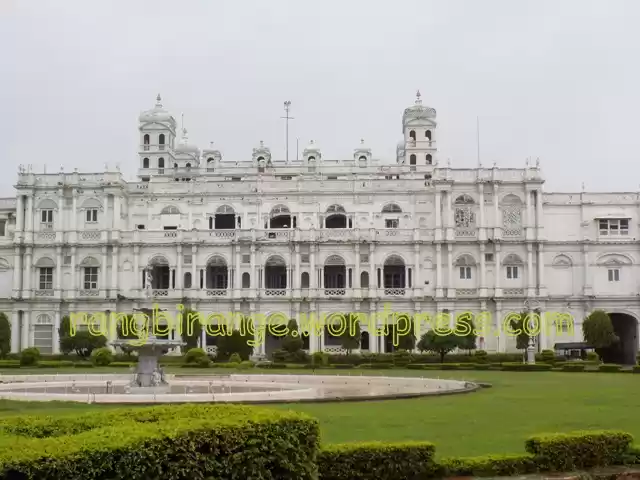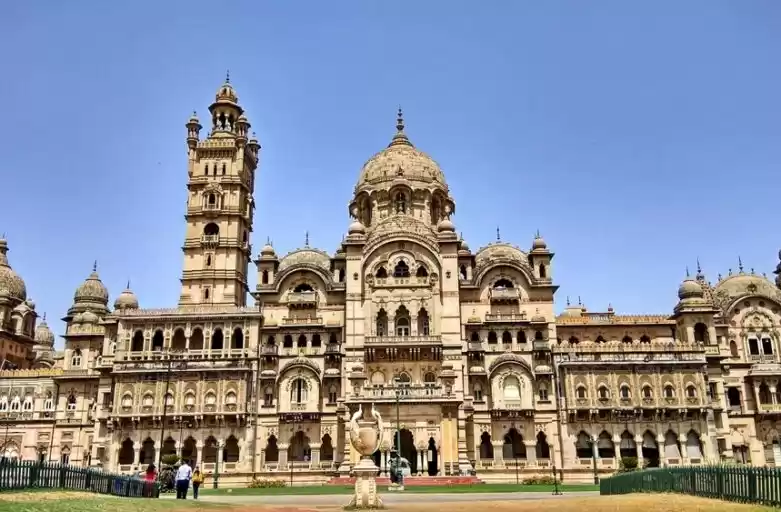
I cannot tell what sentiments haunted me when I saw the huge structure. Something pulled me inside and I kept going from one room to the other, with myriad thoughts battling with each other in my head.
Hidden behind its opulent walls is glorious 700-year-old Indian history. The palace in its womb carries the resplendent past of the Wadiyar Dynasty of Mysore or Mysuru. The first time I laid my eyes on the magnificent Mysore Palace, I was spellbound. For it was the first grand palace-museum I ever saw.
There are many tales to be told about this slice from our past - I will begin with its architecture. Many who are stunned by seeing the grand palace wouldn’t know that the original one was charred in a fire in 1897.
In almost 25 years it was redesigned and built by the British architect Henry Irwin at a cost of ₹4.5 million in 1921. Some rooms which were part of the old palace still exist but the access is barred.
It is a stone structure of three-stories, with marble domes done in deep red, also having a 145ft five-storied tower.
Its renewed architectural style is Indo-Saracenic, and is a mix of Hindu, Rajput, Muslim and Gothic styles.
Although Indian states are not ruled by the kings and royalty anymore, after India’s freedom in 1947, but a part of the Mysore Palace is still occupied by the royal family of the Wadiyars.
The Wadiyar Dynasty began in 1399 with Yaduraya. Since then, 24 rulers have succeeded in the dynasty, the last being Jayachamaraja Wadiyar.
Luminous and How!
The Palace is much-famous for being illuminated using more than 100,000 bulbs on all public holidays and Sundays for 45 mintues.
But the secret is that if you cough up Rs 50,000 the management will light it up for good 30 minutes exclusively on your request! Talk of being part of your history!
Besides if you decide to sit through the powerful Sound and Light show, you can see the lit up palace for three minutes right after the show from Mon-sat. Twice Lucky!
While Dussehra is celebrated in every Indian state differently, in Mysore the centuries old tradition is followed every year, with the Palace taking the centrestage. During the 10 days various artists perform on the palace grounds. And on Vijay Dashmi or the tenth day of the festival, a grand parade with caparisoned elephants starts from palace grounds.
The Walls leading to Kalyan Mandap or the Wedding Hall have 26 3D oil paintings of the Dussherah festival royal procession of the yore, when kings would be part of it. When I saw the paintings I realised that seen from any direction, the processions seem to be coming in my direction! How wondrous.
The Grandeur
There are many intriguing things about the palace which I am going to discuss in details now.
Spread over 72 acres, it has four arched gateways, and one enters through the imposing East Gate.
I first saw the miniature of the original wooden palace that got burnt down.
The gallery through which we entered has amazing Indian and European sculptures.
On reaching the Elephant Gate ahead, one sees that it is decorated with floral designs, and has the double-headed eagle - royal symbol of Mysore. To one side of it lies the Royal Elephant Throne that’s embellished with 84kg pure gold!
Shimmery stained-glass chandeliers and ceiling with peacock motifs catch the eyes at the next spot - Kalyan Mandap, which I have already mentioned.
Next in line was the portrait gallery, displaying gigantic photo of the royal family.
Next came the Durbar Hall or Diwan-e-Aam. From the hall, Chamundi Hills in the distance looked breathtaking. However, the hall itself is a bit gaudy with its real gold hanging from the ceiling and pillars!
Incidentally there’s a Goddess Chamundeshwari temple in the hills - the royal family’s patron deity.
It leads to the smaller Diwan-e-Khas or Ambavilasa, the private chamber of the kings.
The Armoury
What I saw next, left me awestruck! For the first time I saw what the real swords and daggers look like. To understand the mastery India has had in that age, or the talent of swordsmiths and metalsmiths, one should see the armoury here, displaying more than 700 pieces.
All sorts of swords, daggers, spears, swords, and axes are kept here. A sword used by famous king Tipu Sultan is also on display.
Animal Lover, Eh?
Anyone would shudder looking at the taxidermy collection of this palace. While hunting animals was a royal sport in the days of yore, today when you’d look at all those stuffed animals hanging from the walls you’d feel sorry, at least I did.
50 animals including 14 tigers, shot at what are now Nagarhole and Bandipur sanctuaries; and African two-horned rhinoceros, shot on a hunting expedition to Africa; deers and others, blankly stare at you.
My last thoughts were that yes, it’s a good repository of India’s wealthy and glorious past.
Frequent searches leading to this page:-
mysore tourist attractions, top mysore tourist attractions, beautiful mysore tourist attractions, famous mysore tourist attractions, most visiting places in mysore, most famous tourist places in mysore





